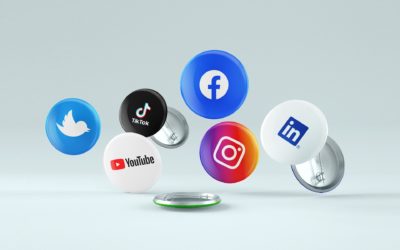The flood of information on the Internet means that organizations have to compete for consumers’ attention. Much of the content that can be found online is monetized through third-party ads, so clicks can be seen as the new currency of the Internet. More and more organizations and individuals are relying on clickbait to increase their own click rates. Consumers are deliberately manipulated by arousing their curiosity and enticing them to click on related links. Although many people perceive clickbait as something negative and communicate this clearly, its use is widespread in everyday life. This raises the question of whether it is necessary for organizations to exploit consumer curiosity. This post will look at where clickbait occurs, why it is so effective, and what problems it might cause for consumers.
Disclaimer
All content and statements within the blog posts are researched to the best of our knowledge and belief and, if possible, presented in an unbiased manner. If sources are used, they are indicated. Nevertheless, we explicitly point out that the content should not be understood as facts, but only as a suggestion and thought-provoking ideas for the own research of the readers. We assume no liability for the accuracy and/or completeness of the content presented.
While offline media can rely on a rather static user group, there is little user loyalty when searching for information on the Internet. Content creators face continuous competition and have to fight for the (limited) attention of consumers. Clickbait is often used to generate the attention. This involves deliberately presenting information in a way that leaves obvious questions unanswered in order to arouse the curiosity of the audience and get them to click on the relevant links.¹ To better understand this phenomenon, it is worth looking at a psychological approach that might explain the human response to clickbait. George Loewenstein (1994), in his widely cited work, presented a new perspective that looks at human curiosity from a different angle. His theory is essentially based on the belief that curiosity occurs when individuals want to overcome the discrepancy between their actual level of knowledge and their desired level of knowledge. This implies at the same time that the mere realization that certain knowledge is not possessed is not sufficient for curiosity to develop. Instead, value must be assigned to the missing knowledge such that the higher level of knowledge represents a desired state for people to become curious. Curiosity can thus be understood as the explicit desire to fill a known information gap. It is usually intrinsically motivated, as the individual benefits from closing the gap rather than from the new knowledge gained or the application of that knowledge. In addition, it is important to keep in mind that curiosity can be generated both voluntarily and by external influences and thus involuntarily.²
In this understanding, clickbait can be attributed to involuntarily generated curiosity. Organizations and individuals use clickbait as a strategic measure to get more traffic to their own content. This phenomenon can be observed most frequently in social networks, but it also occurs again and again in classic journalism. Clickbait is most effective online because it allows data-driven efforts and enables content creators to adjust their content in real time, thereby optimizing its effectiveness.³ Chen et al. (2015) pointed out in their work that clickbait is able to mislead consumers and favors the spread of “fake news.” Although they look in particular at the tabloidization of news and point to the danger that could come from mixing commercial and editorial interests, it is reasonable to assume that their findings can be applied to other areas as well. The deceptive intent of clickbait can be seen as problematic regardless of the industry in which it occurs. Exaggerating, sensationalizing, or willfully spreading false information to increase one’s profit harms consumers and society.⁴
Even if the criticism of clickbait is justified, appropriate differentiation should be made when examining it. Just because a content creator uses clickbait, it cannot be directly assumed that consumers are to be misled by it. The deliberate withholding of information, which leads to users becoming curious, is only problematic if the linked content is not able to fulfill the generated expectations. The constant competition for customers’ attention could also lead to organizations and individuals who would not otherwise use clickbait feeling compelled to resort to such measures. Otherwise, they may risk losing market share or limit their own success in acquiring new users. When clickbait is used by organizations to create high expectations and attract people’s curiosity, it should be considered a valid tool as long as the organizations are able to actually fulfill the expectations. In the context of business, clickbait often exists in a form that creates a sense of urgency so that individuals are prompted to act impulsively. Suitable examples of this approach in practice could be highly limited offers or short-term discounts.
Organizations and individuals who use clickbait responsibly should nevertheless be aware that it also exposes them to potential risks. If consumers are aware of the fact that they have been manipulated to reach a certain decision, it can be assumed that this will be met with rejection. This is particularly likely if the decision made is associated with negative consequences. Dissatisfied customers pose a threat to organizations, as they can damage the organization’s reputation and thus also lower the brand value. Therefore, organizations should thoroughly consider whether it is necessary to take this risk before implementing respective measures. Many organizations can already differentiate themselves from their competitors on the basis of the quality of the services they offer, so risky strategies may not even be necessary in the context of communication with the relevant stakeholder groups.
Even though many people express negative opinions regarding clickbait, one thing must be emphasized at this point: it works. In order to get consumers’ attention, many organizations rely on content that is meant to generate curiosity and entice users to click on more in-depth links. In the battle for views and attention, clickbait is a promising tool that is used especially in social networks. As long as users are not misled and the expectations created can actually be fulfilled by the organizations, there is little to be said against its utilization. Nevertheless, the potential dangers to one’s own reputation and brand value should be taken into account before a decision is made on the adoption of such activities. As long as clickbait is abused by individual actors to deliberately deceive consumers, there is always a risk that the negative perception will also affect more responsible organizations.
¹ Chakraborty, A., Paranjape, B., Kakarla, S., & Ganguly, N. (2016, August). Stop clickbait: Detecting and preventing clickbaits in online news media. In 2016 IEEE/ACM international conference on advances in social networks analysis and mining (ASONAM), 9-16.
https://doi.org/10.1109/ASONAM.2016.7752207.
² Loewenstein, G. (1994). The psychology of curiosity: A review and reinterpretation. Psychological bulletin, 116(1), 75-98.
https://doi.org/10.1037/0033-2909.116.1.75.
³ Potthast, M., Köpsel, S., Stein, B., & Hagen, M. (2016, March). Clickbait detection. In European Conference on Information Retrieval, 810-817.
https://doi.org/10.1007/978-3-319-30671-1_72.
⁴ Chen, Y., Conroy, N. J., & Rubin, V. L. (2015, November). Misleading online content: recognizing clickbait as “false news”. In Proceedings of the 2015 ACM on workshop on multimodal deception detection, pp. 15-19.
https://doi.org/10.1145/2823465.2823467.



